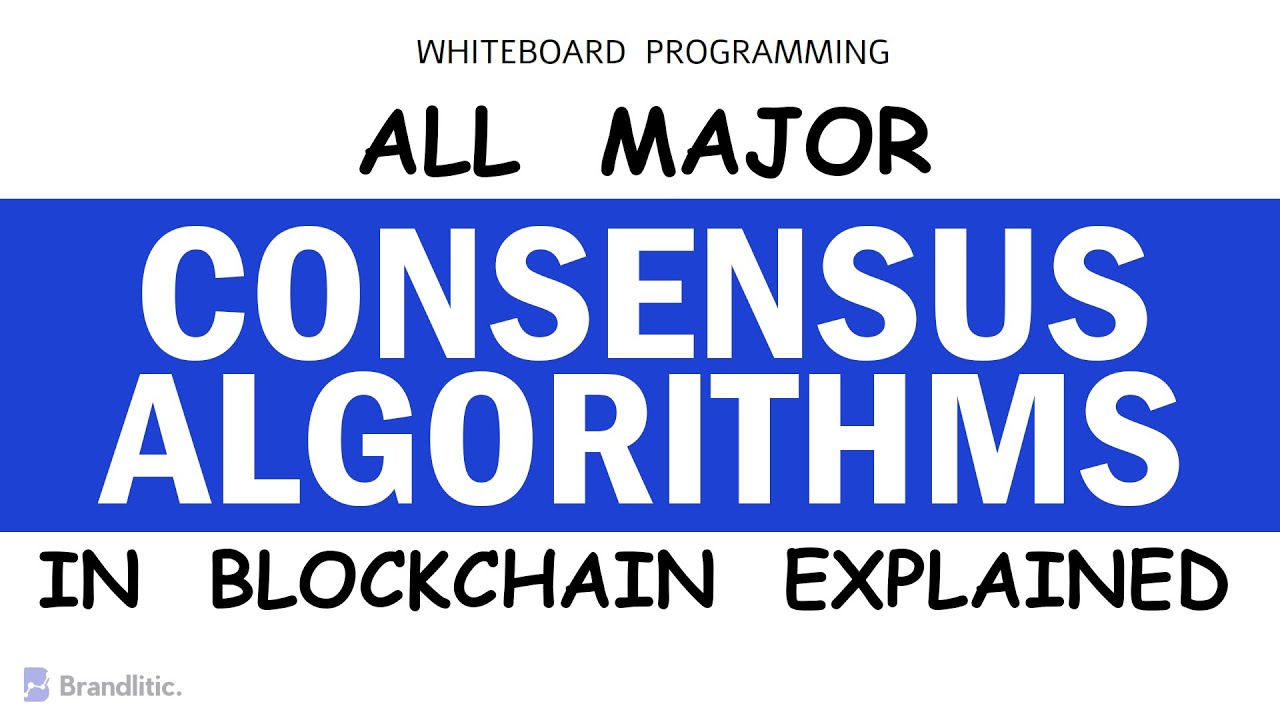Delegated Byzantine Fault Tolerance - Complete Blockchain Development Course
Summary
TLDRThis video introduces the Delegated Byzantine Fault Tolerance (DBFT) consensus algorithm, which assigns roles to nodes for efficient consensus. Unlike traditional mining, DBFT employs ordinary and consensus nodes, with the latter validating blocks and representing the network's majority. The process is streamlined, requiring only a two-thirds approval from selected delegates, making it faster and resource-efficient compared to proof-of-work methods. However, it faces challenges if dishonest nodes are elected. Neo is highlighted as a key platform utilizing DBFT, demonstrating the ongoing evolution of consensus mechanisms in blockchain technology.
Takeaways
- 😀 DBFT (Delegated Byzantine Fault Tolerance) is a consensus algorithm that assigns roles to nodes in a blockchain network.
- 🔍 In DBFT, nodes are categorized into ordinary nodes, which can exchange assets, and consensus nodes, which validate blocks.
- 🏛️ Consensus nodes act like elected representatives, proposing blocks on behalf of ordinary nodes.
- 🎲 A consensus node is randomly selected to propose a block, which requires approval from two-thirds of the other consensus nodes.
- ⚡ DBFT is faster than proof of work and requires fewer resources since it avoids complex cryptographic puzzles.
- 🛡️ The algorithm is resistant to forking, maintaining a single version of truth at any time.
- 🚨 A major challenge arises if a dishonest speaker is selected, requiring honest delegates to vote down the proposal.
- 🤝 Users must diligently vote for trustworthy delegates to ensure that dishonest delegates are in the minority.
- 📊 Some platforms provide data on the honesty of delegates to assist users in making informed voting choices.
- 🌐 Neo is a prominent blockchain platform utilizing DBFT, aimed at building a scalable network for decentralized applications.
Q & A
What is the Delegated Byzantine Fault Tolerance (DBFT) consensus algorithm?
-DBFT is a consensus algorithm that assigns roles to different nodes in a blockchain network to coordinate consensus without the need for miners.
How are nodes categorized in the DBFT system?
-Nodes in DBFT are categorized into ordinary nodes and consensus nodes. Ordinary nodes can transfer assets but do not participate in block validation, while consensus nodes verify blocks.
What role do consensus nodes play in DBFT?
-Consensus nodes act as representatives for ordinary nodes and have the authority to verify each block proposed to the blockchain.
What criteria must an ordinary node meet to become a consensus node?
-Criteria for becoming a consensus node vary by platform and may include owning special equipment, having a dedicated internet connection, or holding a certain stake in the network.
How is a speaker selected in the Neo blockchain?
-In the Neo blockchain, a consensus node is randomly selected from the pool of consensus nodes to act as the speaker responsible for creating and proposing a new block.
What happens if a proposed block does not receive enough votes?
-If a proposed block does not receive approval from two-thirds of the delegates, the speaker reverts to being a normal delegate, and a new speaker is chosen to propose another block.
What are the advantages of using DBFT over Proof of Work?
-DBFT is faster and requires fewer resources than Proof of Work, as it does not involve complex cryptographic puzzles and reduces the risk of forking.
What challenges does DBFT face regarding dishonest speakers?
-DBFT must rely on honest delegates to vote down proposals from dishonest speakers. If a majority of delegates are honest, they can prevent a fraudulent block from being added.
How can users ensure they vote for trustworthy delegates?
-Users can review data on the honesty and performance of each delegate, enabling them to vote for delegates who are likely to act in the network's best interests.
Which blockchain platform is noted for using the DBFT consensus mechanism?
-Neo is highlighted as a significant advocate for the DBFT consensus mechanism, aiming to create a scalable network for decentralized applications.
Outlines

Этот раздел доступен только подписчикам платных тарифов. Пожалуйста, перейдите на платный тариф для доступа.
Перейти на платный тарифMindmap

Этот раздел доступен только подписчикам платных тарифов. Пожалуйста, перейдите на платный тариф для доступа.
Перейти на платный тарифKeywords

Этот раздел доступен только подписчикам платных тарифов. Пожалуйста, перейдите на платный тариф для доступа.
Перейти на платный тарифHighlights

Этот раздел доступен только подписчикам платных тарифов. Пожалуйста, перейдите на платный тариф для доступа.
Перейти на платный тарифTranscripts

Этот раздел доступен только подписчикам платных тарифов. Пожалуйста, перейдите на платный тариф для доступа.
Перейти на платный тарифПосмотреть больше похожих видео

All Major Blockchain Consensus Algorithms Explained | Consensus Mechanism in Blockchain

What is Byzantine Fault Tolerance in Crypto (Animated) | BFT Explained Simply

Proof of WHAT?! Overview of 13 different consensus algorithms for cryptocurrencies!

#Distributed System Architecture

RAFT in Blockchain Technology 🔥🔥

CAT: Redbelly Network Announces Compliant Asset Tokenisation Solution
5.0 / 5 (0 votes)
